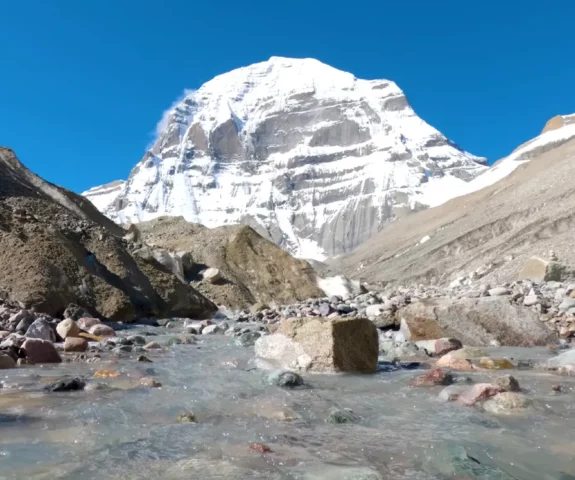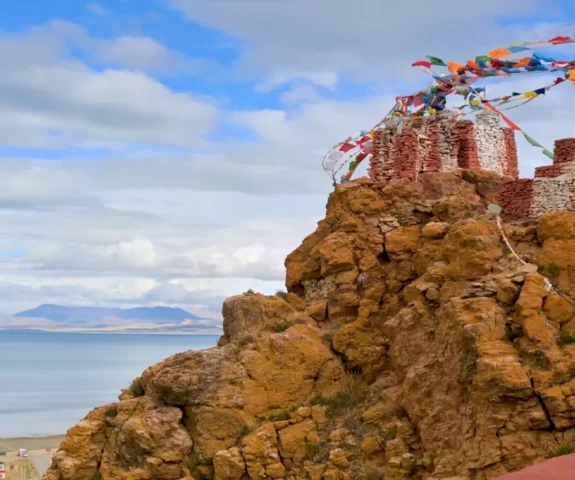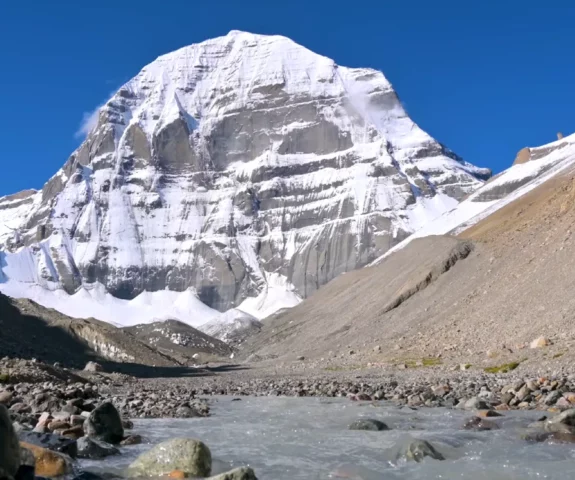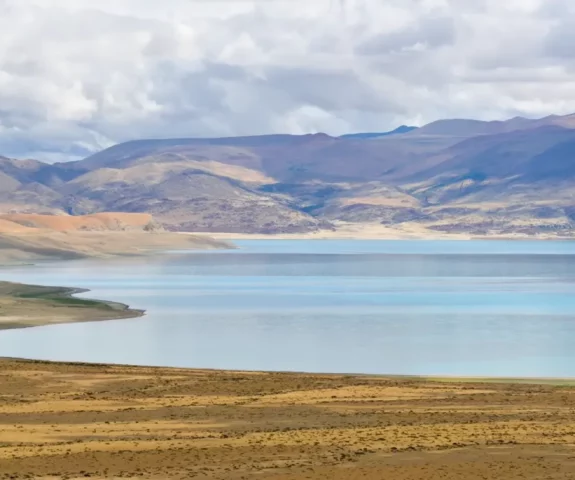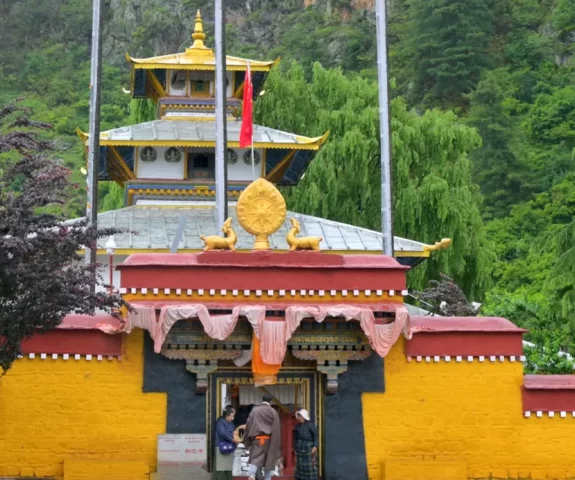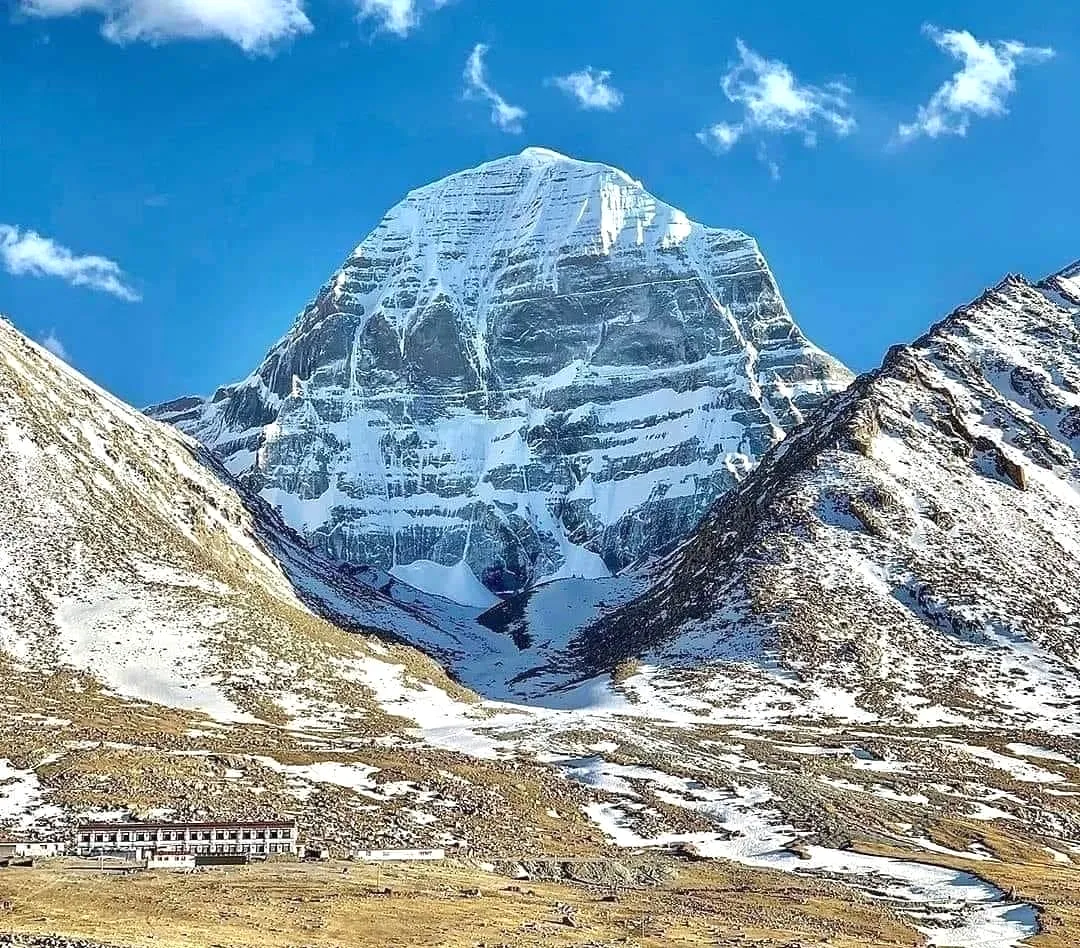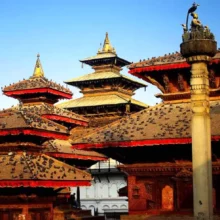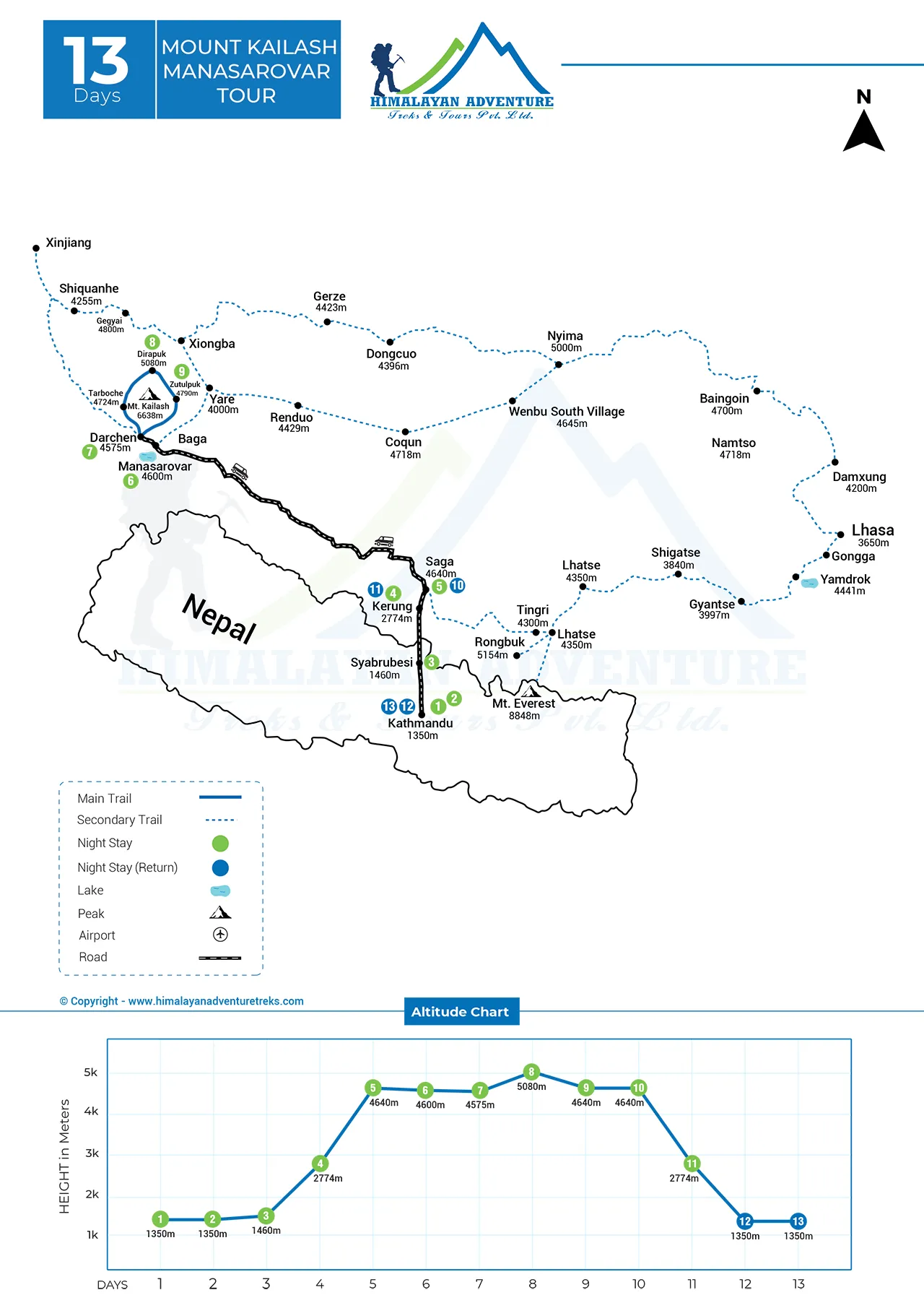Duration
13 DaysMount Kailash Manasarovar Tour 13 Days
Trip Grade
ModerateGroup Size
1-16 PeopleMax Altitude
6,638m. / 21,778ft.Best Season
May- SeptemberActivity
Pilgrimage TourMeals
Breakfast, Lunch & DinnerAccommodation
Hotels & TeahousesTransportation
BusTrip Customization
On request (click here)Highlights of Mount Kailash Manasarovar Tour 13 Days
- Mount Kailash (6638m) – The sacred peak believed to be the abode of Lord Shiva.
- Lake Mansarovar (4600m) – A holy lake for ritual baths and spiritual purification.
- Kailash Parikrama (52 km) – A challenging trek around Mount Kailash for divine blessings.
- Dolma La Pass (5600m) – The highest and most sacred point of the trek.
- Gauri Kund – The mystical lake associated with Goddess Parvati.
- Pashupatinath Temple – A sacred Hindu temple visited before the journey.
- Kyirong Valley – A picturesque Tibetan town with stunning landscapes.
- Brahmaputra River – Witness the mighty river flowing through Tibet.
- Tibetan Culture & Monasteries – Experience ancient Buddhist traditions and stunning monasteries.
- Spiritual Fulfillment – A once-in-a-lifetime pilgrimage for Hindus, Buddhists, Jains, and Bon followers.
Trip Introduction
The Mount Kailash Manasarovar Tour is one of the holiest pilgrimages in the world, attracting thousands of devotees and adventure seekers every year. Located in the remote Tibet Autonomous Region of China, Mount Kailash (6,638 meters) is considered sacred in Hinduism, Buddhism, Jainism, and the Bon religion. Hindus believe that Lord Shiva resides at the peak of Mount Kailash, meditating in eternal bliss.
The mountain is also the axis mundi or the cosmic center of the universe, according to ancient scriptures. The Kailash Parikrama (Kailash Kora) is a 52-kilometer circumambulation that devotees undertake on foot to seek spiritual enlightenment. The trek around Mount Kailash is considered one of the toughest spiritual treks, as it involves crossing Dolma La Pass (5,630 meters), the highest point of the yatra.
Nearby Lake Mansarovar (4,590 meters) is another sacred destination, believed to have been created by Lord Brahma for meditation and purification. The lake’s crystal-clear blue waters change color throughout the day, and pilgrims perform the Mansarovar Lake Parikrama to cleanse their sins.
Many devotees take a holy dip in Lake Mansarovar, believing it purifies the soul and removes past life’s karma. The yatra is particularly popular among Indian pilgrims, with various travel agencies offering Mount Kailash Tour package options via Nepal, Tibet, and India. The most common routes for the pilgrimage are via Simikot, Lhasa, and Kyirong, with flights and overland journeys arranged for travelers.
The spiritual significance of the Mount Kailash Manasarovar Tour extends beyond Hinduism; Buddhists regard it as Kang Rinpoche (Precious Snow Jewel) and associate it with Guru Rinpoche and Buddha Demchok. Jains believe it to be Ashtapada, where their first Tirthankara, Rishabhdev, attained liberation.
The ancient Bon religion considers Kailash the spiritual center where their founder, Tonpa Shenrab, descended from the heavens. Many pilgrims carry out the Mount Kailash Tour by Helicopter, which reduces travel time and avoids the strenuous overland journey. The best time for the yatra is from May to September, when the weather is favorable for trekking.
Due to the high altitude, travelers are advised to undergo altitude sickness preparation, including acclimatization in Kathmandu or Lhasa before starting the trek. Kailash Mansarovar Yatra cost varies based on the route and mode of transportation, with helicopter and overland tours offering different pricing options.
Tour operators provide Kailash Mansarovar tour visa and permit services, ensuring a hassle-free pilgrimage experience. Many pilgrims chant Om Namah Shivaya or Buddhist mantras while trekking, enhancing their spiritual connection with the divine. The yatra also offers breathtaking views of Rakshas Tal, the lake associated with demonic energy in Hindu mythology. The experience of witnessing Mount Kailash’s reflection in Lake Mansarovar is a mesmerizing sight for pilgrims and photographers alike.
For those seeking a spiritual journey to Mount Kailash, the pilgrimage offers deep cultural, religious, and mystical significance that leaves a lasting impression on every devotee.
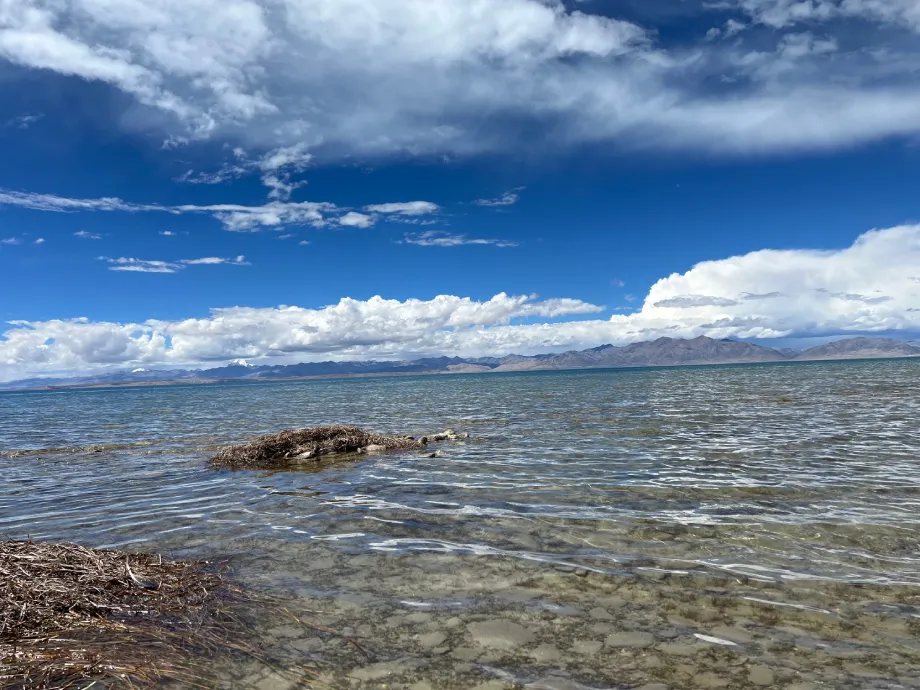
Mount Kailash Mansarovar Tour – A Detailed Guide for Indian Pilgrims
The Mount Kailash Tour is one of the most revered pilgrimages for Hindu devotees from India, as well as for followers of Buddhism, Jainism, and the Bon religion. Located in Tibet (China) at an altitude of 6,638 meters (21,778 feet), Mount Kailash is believed to be the abode of Lord Shiva. The journey includes a visit to Lake Mansarovar, a sacred freshwater lake at an altitude of 4,590 meters (15,059 feet), where pilgrims perform ritual bathing and prayers to cleanse their sins. The pilgrimage involves trekking the Kailash Parikrama (circumambulation), a challenging 52-kilometer trek that takes 3 days to complete. This yatra is considered a path to moksha (liberation) and is one of the most sought-after spiritual journeys for Indian Hindus.
Best Season for Kailash Manasarovar Tour
The best time for the Kailash Mansarovar Tour is from May to September, as the weather is relatively stable, and the roads and trekking trails are accessible. Below is a season-wise breakdown:
- May to June: Ideal for pilgrims, as temperatures are moderate, and there is less snowfall. It is also the time for the full moon yatra, which is highly auspicious.
- July to August: Monsoon season, but still manageable for travel via Nepal and Tibet routes. This is also the time when Guru Purnima is celebrated.
- September: The last month for the yatra, offering clear views of Mount Kailash and Lake Mansarovar with less crowding.
Significance of Mount Kailash Manasarovar Tour for Indian Hindus
For Hindu devotees from India, Mount Kailash is considered the spiritual center of the universe and the sacred home of Lord Shiva and Goddess Parvati. The yatra holds immense mythological and religious significance, as it is believed that performing the Kailash Parikrama (a 52 km trek) and taking a holy dip in Lake Mansarovar washes away all sins and brings moksha (liberation from the cycle of rebirth). The significance includes:
- Mythological Importance: Hindu scriptures mention Mount Kailash as the divine abode of Lord Shiva, where he meditates and blesses his devotees.
- Religious Rituals: Pilgrims perform Mansarovar Snan (holy bath) and drink the sacred water, believing it purifies the soul and mind.
- Astrological and Spiritual Beliefs: Many believe that circumambulating Mount Kailash balances karma and removes negative energies.
- Connection to the Ramayana and Mahabharata: It is said that Lord Hanuman, the Pandavas, and many sages undertook this journey for spiritual fulfillment.
- Full Moon Yatra: The Kailash Full Moon Yatra during Purnima (full moon night) is considered especially auspicious for Indian Hindus.
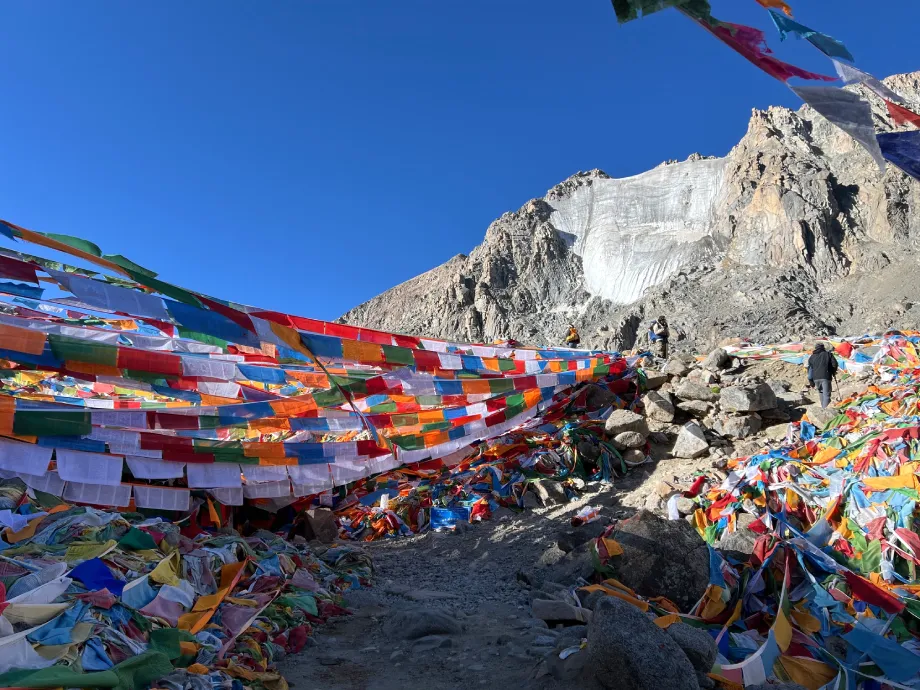
How Difficult is the Mount Kailash Manasarovar Tour?
The Mount Kailash Manasarovar Tour difficulty level is considered moderate to difficult, mainly due to:
- High Altitude: Kailash Parikrama reaches 5,630 meters (18,471 feet) at Dolma La Pass, making it challenging for those unaccustomed to high-altitude trekking.
- Thin Oxygen Levels: Oxygen levels drop significantly, requiring proper acclimatization to avoid acute mountain sickness (AMS).
- Trekking Terrain: The journey includes steep ascents, rocky paths, and harsh weather conditions, making it a physically demanding trek.
- Extreme Weather: Temperatures can drop below -10°C at night, and strong winds make trekking more challenging.
To prepare for the journey, Indian pilgrims should undergo physical fitness training, including cardio exercises, brisk walking, and breathing exercises, at least 2 months before the trip.
Process for Indian Tourists: Visa, Permit, and Travel Routes
1. How to Apply for Mount Kailash Tour (For Indian Citizens)?
Indian pilgrims need to obtain special permits and a Tibet Travel Visa to enter Mount Kailash in Tibet, China. There are two main routes for Indian travelers:
2. Routes for Mount Kailash Tour (For Indians)
A. Via Nepal (Kathmandu Route – Most Popular) (optional route only)
This is the most preferred route for Indian travelers. The journey starts from Kathmandu, Nepal, and includes:
- Arrival in Kathmandu – Visa processing and briefing.
- Drive to Syabrubesi / Border crossing into Tibet at Kyirong.
- Overland Journey to Mansarovar and Mount Kailash – Trekking begins after reaching Darchen.
- Return via the same route.
Documents Required:
- Indian Passport with at least 6 months’ validity
- Chinese Visa and Tibet Travel Permit (arranged by travel agencies)
- Medical fitness certificate
- Proof of Indian nationality (Aadhar, Voter ID, etc.)
Travel Tips for Indian Pilgrims
- Acclimatization: Spend at least 2 days in Kathmandu or Tibet (Kyirong) before starting the trek.
- Altitude Sickness Preparation: Carry Diamox tablets, oxygen cylinders, and hydration salts.
- Pack Wisely: Thermal wear, trekking shoes, rain gear, sunglasses, and dry fruits are essential.
- Spiritual Items: Many Indian devotees carry Rudraksha malas, Shiva idols, and holy water containers to bring back Mansarovar water.
- Health & Insurance: Get a comprehensive travel insurance policy covering high-altitude sickness.
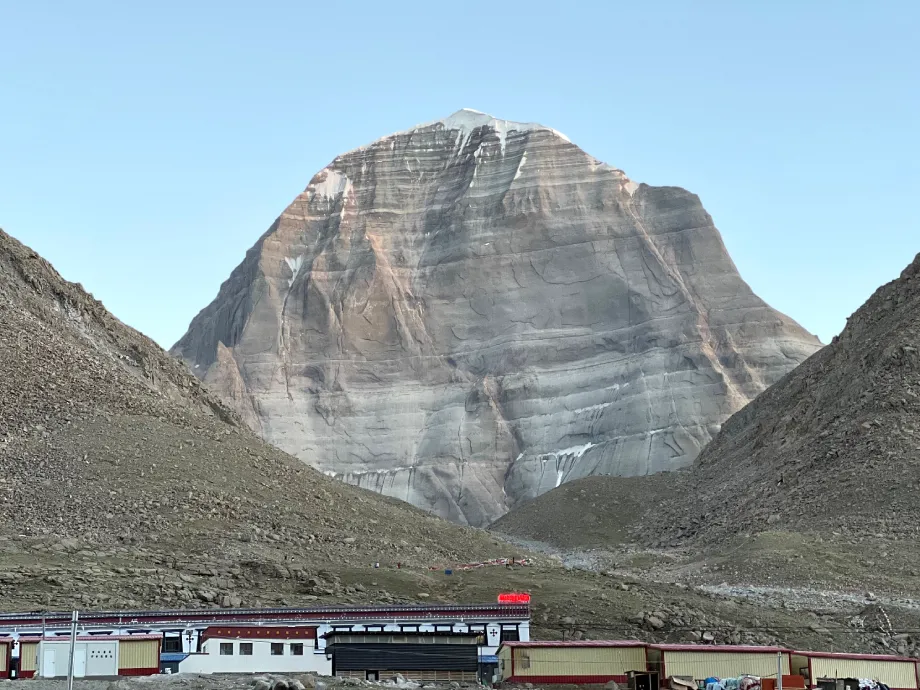
The Kailash Manasarovar Tour is not just a physical journey but a spiritual experience that brings peace, blessings, and self-realization. For Indian Hindus, it is one of the most important pilgrimages, offering the opportunity to connect with Lord Shiva and attain moksha.
Although the yatra is physically challenging, proper preparation, fitness, and spiritual devotion make the journey fulfilling. Booking through authorized agencies ensures a smooth experience with visas, permits, and travel arrangements. Whether traveling via Nepal or through the Indian Government route, every Indian devotee dreams of completing this once-in-a-lifetime sacred journey to Mount Kailash and Mansarovar Lake.
Note: This package is only for Indian citizens. Other country passport holders require additional days and costs.
Please visit the link for non Indian passport holders. Kailash Mansarovar Yatra -16 Days
Outline Itinerary of Mount Kailash Manasarovar Tour 13 Days
Day 01: Arrival in Kathmandu Airport (1400m).
Day 02: Sightseeing in Kathmandu & Tour Briefing.
Day 03: Drive from Kathmandu to Syabrubesi / Timure (1800m).
Day 04: Cross Rasuwagadhi Border & Drive to Kyrung (2900m).
Day 05: Drive from Kyrung to Saga (4400m).
Day 06: Drive from Saga to Lake Manasarovar (4600m).
Day 07: Holy Bath at Lake Manasarovar & Drive to Darchen (4700m).
Day 08: Begin Kailash Kora –Trek to Diraphuk (4950m)
Day 09: Trek from Diraphuk to Zuthulphuk (4850m) via Dolma La Pass (5600m).
Day 10: End of Kailash Kora & Drive to Saga.
Day 11: Drive from Saga to Kyrung.
Day 12: Drive from Kyrung to Kathmandu.
Day 13: Departure to Kathmandu Airport.
Our guests sharing their experiences (Photo/Video Gallery)
Detail itinerary of Mount Kailash Manasarovar Tour 13 Days
Day 01: Arrival in Kathmandu Airport (1400m).
Your spiritual journey begins as you arrive in Kathmandu, the vibrant capital of Nepal, nestled in a valley surrounded by the Himalayas. Upon landing at Tribhuvan International Airport, you will be greeted by our representative with a warm welcome, marked by the traditional Rudraksha mala, symbolizing peace and devotion.
A comfortable transfer to your hotel follows, where you can relax after your journey. Kathmandu, known as the “City of Temples,” offers a unique blend of spirituality, history, and culture. You may choose to rest or explore the surroundings at leisure. The day is kept free for you to acclimate to the new environment and prepare for the upcoming adventure. Enjoy a comfortable overnight stay at your hotel.
Activity: Airport Pickup, 30 min
Max. Altitude: 1,400m/4,593ft. Kathmandu
Accommodation: Hotel
Day 02: Sightseeing in Kathmandu & Tour Briefing.
Today, after breakfast, you embark on a guided sightseeing tour of Kathmandu, visiting some of the most revered Hindu and Buddhist pilgrimage sites. Your journey begins at Pashupatinath Temple, one of the holiest shrines dedicated to Lord Shiva, where devotees gather for prayers and rituals. Next, you visit Guhyeshwari Devi Temple, a powerful Shakti Peeth associated with Goddess Parvati.
Moving ahead, you reach Bouddhanath Stupa, a massive Buddhist monument and UNESCO World Heritage Site, revered as one of the largest stupas in the world. The final stop is Budhanilkantha Temple, where a giant stone-carved Vishnu statue rests on a serpent bed in a sacred pond. The afternoon is kept free for personal preparations and last-minute shopping for the journey ahead. In the evening, a detailed tour briefing takes place in the hotel meeting hall, where essential information is provided, and down jackets are distributed to all participants.
Activity: Sightseeing, 5-6 hours
Max. Altitude: 1,400m/4,593ft. Kathmandu
Meal: Breakfast, Lunch & Dinner
Accommodation: Hotel
Day 03: Drive from Kathmandu to Syabrubesi / Timure (1800m).
Early morning, after breakfast, you set out on a scenic drive towards the Nepal-Tibet border. The journey takes approximately 6-8 hours, covering a distance of 115 to 125 km, depending on the final stop. The route follows the Trishuli River, offering stunning views of lush valleys, terraced fields, and rolling hills.
The drive includes both paved and off-road sections, especially as you near the border region. You pass through small towns and villages, experiencing the rural beauty of Nepal. Upon arrival in Syabrubesi (1600m) or Timure (1800m), you check into your accommodation and rest for the night. The day ends with a traditional Nepali dinner, preparing you for the border crossing the next day.
Activity: Drive, 6-7 hours
Max. Altitude: 1,800m/5,906ft. Syabrubesi
Meal: Breakfast, Lunch & Dinner
Accommodation: Teahouse
Day 04: Cross Rasuwagadhi Border & Drive to Kyrung (2900m).
After an early breakfast, a short 15 km drive takes you to Rasuwagadhi (1950m), the Nepal-China border. Here, you complete immigration and customs formalities on both the Nepalese and Tibetan sides. Once formalities are completed, you meet your Tibetan guide and driver, marking the beginning of your journey in Tibet.
From Rasuwagadhi, a 35 km drive (about 1 hour) takes you to Kyrung Town (2900m). The landscape changes dramatically, with lush greenery giving way to high-altitude plateaus and rocky terrain. Kyirong, also known as “Gyirong,” is a beautiful town with breathtaking mountain views. The rest of the day is for rest and acclimatization, allowing your body to adjust to the higher altitude.
Activity: Drive, 2-3 hours
Max. Altitude: 2,900m/9,514ft. Kyirong
Meal: Breakfast, Lunch & Dinner
Accommodation: Hotel
Day 05: Drive from Kyrung to Saga (4400m).
After breakfast, you begin the journey towards Saga (4400m), covering a distance of 170 km in approximately 4 hours. The drive passes through the Kyirong High Pass, offering spectacular Himalayan views. Along the way, you stop at Peiku Tso Lake, a stunning turquoise alpine lake reflecting the surrounding snow-capped peaks.
The journey continues along the mighty Brahmaputra River, one of the most significant rivers in Tibet. The vast, barren Tibetan plateau unfolds before you, creating an otherworldly landscape. You receive a hot, packed lunch on the way. By late afternoon, you arrive in Saga, where you check into a hotel for dinner and an overnight stay.
Activity: Drive, 4-5 hours
Max. Altitude: 4,400m/14,436ft. Saga
Meal: Breakfast, Lunch & Dinner
Accommodation: Hotel
Day 06: Drive from Saga to Lake Manasarovar (4600m).
Today’s journey is long but rewarding, covering 510 km over approximately 9 hours. You drive through the vast Tibetan plateau, crossing Mayum-La High Pass, which stands at an elevation of over 5000 meters. The road leads you towards the sacred Lake Manasarovar (4600m), one of the holiest lakes in Hindu and Buddhist traditions.
As you drive around the lake, you witness its pristine blue waters set against the backdrop of Mount Kailash. According to Hindu mythology, Lake Manasarovar was created by Lord Brahma and is believed to cleanse one’s sins upon taking a holy dip. You arrive at Chiu Gompa, a small monastery overlooking the lake, where you check into a guesthouse for the night. Dinner is served at the guesthouse, and you spend the night in this sacred location.
Activity: Drive, 8-9 hours
Max. Altitude: 4,600m/15,092ft. Lake Manasarovar
Meal: Breakfast, Lunch & Dinner
Accommodation: Teahouse
Day 07: Holy Bath at Lake Manasarovar & Drive to Darchen (4700m).
The morning begins with a sacred bath in Lake Manasarovar, a deeply spiritual experience believed to purify the soul. Devotees perform puja (prayers and rituals) by the lake, seeking divine blessings.
After lunch, you embark on a short 40 km drive (about 1 hour) to Darchen (4700m), the base town for the Kailash Kora (parikrama). The rest of the day is free for acclimatization and preparing for the upcoming trek. You may explore the local market, where you can buy any last-minute essentials or souvenirs.
Activity: Puja & Drive, 1-2 hours
Max. Altitude: 4,700m/15,420ft. Darchen
Meal: Breakfast, Lunch & Dinner
Accommodation: Teahouse
Day 08: Begin Kailash Kora –Trek to Diraphuk (4950m)
Today marks the start of the Kailash Parikrama. After breakfast, you drive 8 km (30 minutes) to Yama Dwar, the gateway to the divine trek. Here, you get the closest darshan (view) of Mount Kailash’s south face.
From Yama Dwar, you begin the 14 km trek to Diraphuk (4950m), which takes approximately 5-6 hours. The trail follows the Lha Chu River, offering incredible views of Kailash’s north face. Those unable to do the trek return to Darchen and stay at the hotel.
Activity: Drive & Trek, 4-5 hours
Max. Altitude: 4,950m/16,240ft. Diraphuk
Meal: Breakfast, Lunch & Dinner
Accommodation: Teahouse
Day 09: Trek from Diraphuk to Zuthulphuk (4850m) via Dolma La Pass (5600m).
Day 9 is the most challenging and spiritually significant part of the Kailash Parikrama, as you trek from Diraphuk (4950m) to Zuthulphuk (4850m) via the Dolma La Pass (5600m). The trek begins early in the morning, as you ascend steeply towards Dolma La, the highest and most sacred point of the journey. At the pass, fluttering prayer flags and the serene Gauri Kunda lake mark this sacred spot, believed to be where Goddess Parvati bathes.
After offering prayers, you begin the steep and rocky descent, which requires careful footing on loose stones and ice patches. The landscape shifts from snow-covered ridges to a barren valley, leading towards Zuthulphuk, where you visit the famous Milarepa Cave, associated with the Tibetan saint. After nearly 22 km of trekking over 9-10 hours, you arrive at your guesthouse in Zuthulphuk, where you rest after an exhausting but deeply fulfilling day.
Activity: Trek, 9-10 hours
Max. Altitude: 5,600m/18,373ft. Dolma La Pass
Meal: Breakfast, Lunch & Dinner
Accommodation: Teahouse
Day 10: End of Kailash Kora & Drive to Saga.
Today, you complete the final stretch of the Kailash Kora, marking the end of your sacred trek around Mount Kailash. The morning begins with a short and relatively easy 8 km trek (1.5 hours) from Zuthulphuk (4850m) to Darchen (4700m), passing through rocky terrain and barren landscapes. Upon reaching Darchen, you reunite with the rest of the group and enjoy a well-deserved breakfast.
After refreshing, you board your vehicle and begin the return journey, driving through the vast Tibetan plateau towards Saga (4400m), covering around 490 km in 8 hours. Along the way, you pass stunning views of the Brahmaputra River, high-altitude deserts, and snow-capped peaks, reflecting on the profound spiritual experience of the Kailash Mansarovar Yatra. A packed lunch is provided during the journey, and by evening, you arrive in Saga for an overnight stay at a hotel, enjoying a hot meal and much-needed rest.
Activity: Trek & Drive, 7-8 hours
Max. Altitude: 4,400m/14,436ft. Saga
Meal: Breakfast, Lunch & Dinner
Accommodation: Hotel
Day 11: Drive from Saga to Kyrung.
On Day 11, you begin your return journey from Saga (4400m) to Kyirong (2900m), covering approximately 170 km in 4-5 hours. After breakfast, you depart from Saga, retracing the scenic route through the vast Tibetan plateau, passing breathtaking landscapes of rugged mountains and high-altitude lakes.
The drive takes you alongside the Brahmaputra River, offering mesmerizing views of its deep blue waters winding through the barren terrain. As you descend towards Kyirong, the scenery gradually changes, with the arid landscapes giving way to lush green valleys and dense forests. You reach Kyrung Town, a picturesque border settlement near Nepal, by afternoon and check into your hotel for an overnight stay. The rest of the evening is free for you to relax or explore the local Tibetan markets before your final return to Nepal the next day.
Activity: Drive, 4-5 hours
Max. Altitude: 2,900m/9,514ft. Kyirong
Meal: Breakfast, Lunch & Dinner
Accommodation: Hotel
Day 12: Drive from Kyrung to Kathmandu.
On Day 12, you leave Kyrung (2900m) and drive back to Kathmandu (1300m), covering approximately 155 km in 7-8 hours. After an early breakfast, you proceed towards the Rasuwagadhi border (15 km, 45 minutes), where you complete the necessary immigration and customs formalities on both the Tibetan and Nepali sides. Crossing the border, you enter Nepal and continue the scenic drive through the Trishuli River valley, passing beautiful terraced farmlands, rolling hills, and traditional villages.
The journey involves winding mountain roads, with some off-road sections near the border, making it both adventurous and picturesque. En route, you stop for lunch at a local restaurant, enjoying authentic Nepali cuisine before resuming the drive towards Kathmandu. By evening, you reach the capital and check into your hotel, where you can rest or explore nearby markets for last-minute shopping. After completing the Kailash Mansarovar Yatra, this final evening in Kathmandu is an opportunity to reflect on your spiritual journey before your departure the next day.
Activity: Drive, 7-8 hours
Max. Altitude: 1,400m/4,593ft. Kathmandu
Meal: Breakfast, Lunch & Dinner
Accommodation: Hotel
Day 13: Departure to Kathmandu Airport.
On Day 13, your incredible Mount Kailash Tour comes to an end as you prepare for your departure from Kathmandu. After breakfast at the hotel, you have some free time to relax or do any last-minute shopping for souvenirs and spiritual items. Depending on your flight schedule, a representative will transfer you to Tribhuvan International Airport with warm farewell gestures.
As you drive through the bustling streets of Kathmandu, you can reflect on the unforgettable journey to Mount Kailash and Lake Mansarovar, a once-in-a-lifetime spiritual experience. Upon arrival at the airport, you complete the necessary check-in and immigration formalities before boarding your flight home. As you depart, you carry with you the blessings of Lord Shiva, the sacred energy of Mansarovar, and cherished memories of this deeply spiritual and adventurous pilgrimage.
Activity: Airport drop, 30 min
Max. Altitude: 1,400m/4,593ft. Kathmandu Airport
Meal: Breakfast
Note:
If you have your own private group and want to make your trip private, we can run the custom trip all the day as per your requirements and group size.
Includes and Excludes
What are included with package?
- Three Nights 3-star Hotel in Kathmandu with Breakfast: Enjoy a stay at a 3-star hotel in Kathmandu for three nights with breakfast included.
- Pick-up/Drop by Private Vehicle: Private vehicle transfers will be provided for your pick-up and drop-off at the airport.
- Private Sightseeing Tour in Kathmandu: A private sightseeing tour of Kathmandu will be arranged with an experienced tour guide.
- Transfers in Kathmandu: All necessary transfers in Kathmandu, including arrival and departure, are included.
- Kathmandu-Kerung-Kathmandu Transfers by Private Vehicle: Transportation between Kathmandu and Kerung by private vehicle is included.
- Tibet Group Visa & Necessary Permits: The Tibet group visa and all required permits for your journey will be arranged.
- Tibet Permits for Parikrama: All necessary Tibet permits, including the Parikrama of Kailash and Mansarovar, are included.
- Accommodation in Kailash: Accommodation in Kailash will be in a guesthouse (dormitory room).
- Transportation in Tibet: Transportation within Tibet will be provided throughout the tour.
- English-Speaking Tibetan Guide: An English-speaking Tibetan guide will accompany you throughout the journey.
- Entry Fees for Kailash & Manasarovar: The entry fees for Kailash and Manasarovar are included.
- Medical Kit & Oxygen for Emergency: A medical kit bag and oxygen will be available for emergency use.
- Taxes and Service Charges: All applicable taxes and service charges are covered in the package.
What are not included with package?
- Air Ticket to Kathmandu & Return: International airfare to and from Kathmandu is not included in the package.
- Entrance Fee in Kathmandu: The entrance fees for various attractions in Kathmandu are not included.
- Nepal Re-entry Visa Fee: The Nepal re-entry visa fee is not included and must be obtained separately.
- Travel Insurance: Travel insurance is not included and must be arranged by the traveler.
- Rescue and Evacuation Service: Rescue and evacuation services are not covered and must be arranged separately if needed.
- Personal Expenses: Personal expenses such as phone calls, laundry, bar bills, and any other personal costs are not included.
- Horse for Riding During the Parikrama: Horses for riding during the Parikrama are not included but can be arranged at an additional cost.
- Bottled Drinks & Beverages: Bottled drinks and other beverages are not included.
- Tip for Guide & Driver: Tips for the guide and driver are not included and are at the traveler’s discretion.
- Extra Night Accommodation in Kathmandu: Any extra night accommodation in Kathmandu due to early arrival from Kailash or other reasons is not included and will be at your expense.
- Additional Costs Due to Illness or Rescue: Any additional costs for transport, hotel, or visa charges incurred due to illness or rescue of a traveler are not included.
- Additional Costs Due to Natural Calamities & Unforeseen Circumstances: Any extra costs incurred due to natural calamities or unforeseen circumstances will be the responsibility of the traveler.
Pick Your Suitable Date
Book a Private Trip
Private & Group Discount Price
-
1 -
1 person
US$ 3000
-
2 -
2 people
US$ 3000
-
3 -
5 people
US$ 3000
-
6 -
10 people
US$ 2800
-
11 + people
9999
US$ 2500
Total Cost:
US$ 3000
Route Map & Altitude Chart
Kathmandu
Start/End point
Kathmandu
Trip Information
Mount Kailash Manasarovar Tour – A Detailed Overview
The Mount Kailash Manasarovar Tour is one of the most sacred pilgrimages in the world, attracting thousands of devotees every year. Located in the remote Tibetan Autonomous Region of China, Mount Kailash (6,638m) is revered as the abode of Lord Shiva and is considered a divine center for Hindus, Buddhists, Jains, and Bon followers. Alongside Mount Kailash lies Lake Mansarovar, a pristine high-altitude freshwater lake that is believed to have been created by Lord Brahma. Pilgrims undertake this journey to seek spiritual purification, enlightenment, and liberation from the cycle of rebirth.
The journey is considered extremely challenging due to the high altitude, harsh climatic conditions, and remote geographical location. Despite these challenges, pilgrims embark on the yatra with unwavering faith, believing that a circumambulation (Kora) of Mount Kailash brings divine blessings and absolution of sins. The full Kailash Parikrama (Kora) covers 52 kilometers and takes about three days, passing through significant locations like Yama Dwar, Dolma La Pass (5600m), and Gauri Kund. Many pilgrims also take a holy dip in Lake Mansarovar, which is believed to cleanse the soul and bring inner peace.
Spiritual and Religious Significance
For Hindus, Mount Kailash is the eternal home of Lord Shiva, where he resides in deep meditation with Goddess Parvati. It is believed that completing the Kailash Parikrama at least once in a lifetime washes away all past sins and grants moksha (liberation).
For Buddhists, Mount Kailash is sacred because it is associated with Chakrasamvara (Demchok), the deity of supreme bliss. Tibetan Buddhists also believe that Milarepa, a famous Buddhist saint, meditated here, making the mountain a place of great spiritual power.
In Jainism, Mount Kailash is known as Ashtapada, where the first Tirthankara, Rishabhdev, attained nirvana (liberation). The site is therefore one of the holiest pilgrimage destinations for Jain followers.
For Bon followers, the indigenous religion of Tibet, Mount Kailash is the spiritual center where their supreme deity, Tonpa Shenrab, descended from heaven. They consider it the seat of spiritual energy and perform anti-clockwise circumambulation, unlike other religious groups who walk clockwise.
Best Time to Visit and Weather Conditions on Kailash Manasarovar Tour
The best time to undertake the Kailash Manasarovar Tour is from May to September, when the weather is relatively stable and the routes are accessible. During this period, temperatures range from -5°C to 15°C, making it possible for pilgrims to complete the trek safely. Winters, from October to April, are extremely harsh, with heavy snowfall, freezing temperatures, and strong winds, making the journey impossible.
Since Mount Kailash is located in a high-altitude desert, the air is thin, and oxygen levels are lower than at sea level. Pilgrims should be prepared for sudden weather changes, intense UV radiation, and extreme cold, especially at Dolma La Pass (5600m), the highest point of the trek. Proper acclimatization is necessary to prevent Acute Mountain Sickness (AMS), which can cause dizziness, nausea, headaches, and shortness of breath.
Route Options and Accessibility for Kailash Manasarovar Tour
There are multiple routes to reach Mount Kailash and Mansarovar, with the most popular one starting from Kathmandu, Nepal. Pilgrims travel via Rasuwagadhi–Kyirong border into Tibet, stopping at Saga, Mansarovar, and Darchen before starting the trek.
Another traditional route starts from Lipulekh Pass in Uttarakhand, India, which is managed by the Ministry of External Affairs (MEA) of India. This route involves both trekking and road travel, making it physically demanding.
The Nathula Pass route in Sikkim, India, is another option, but it has limited accessibility due to border restrictions and weather conditions.
Some pilgrims choose to fly to Lhasa, Tibet, and travel overland to Mount Kailash. However, this route is more expensive and requires additional permits. Regardless of the chosen route, all travelers need Chinese visas, Tibet Travel Permits, and other necessary authorizations to enter the region.
The Sacred Kailash Kora (Parikrama)
The most significant part of the Mount Kailash Manasarovar Tour is the Kora, or circumambulation of Mount Kailash. Covering a distance of 52 kilometers, the trek takes three days and is divided into three main sections:
-
Day 1: Darchen to Diraphuk (20km, 4900m) – The trek begins from Darchen, the base camp of Kailash, and follows a scenic path along the Lha Chu Valley. The day’s journey ends at Diraphuk Monastery, where pilgrims can witness the north face of Mount Kailash, considered the most divine sight.
-
Day 2: Diraphuk to Zuthulphuk via Dolma La Pass (22km, 5600m) – This is the most challenging day, as pilgrims ascend to Dolma La Pass (5600m), the highest point of the trek. Here, people offer prayers at Shiva Tsal, a symbolic site where devotees leave old clothes and belongings as a sign of surrendering their past sins. After descending, pilgrims reach Gauri Kund, a sacred lake associated with Goddess Parvati. The day ends at Zuthulphuk Monastery, where pilgrims rest before completing the trek.
-
Day 3: Zuthulphuk to Darchen (10km) – The final stretch of the trek is relatively easy, following a gentle path back to Darchen, marking the completion of the Kailash Kora. Many pilgrims describe the experience as spiritually fulfilling and life-changing.
Accommodation and Food during Kailash Manasarovar Tour
Accommodation varies depending on the route and region. In Kathmandu, pilgrims stay in comfortable 3-star or 4-star hotels. Once in Tibet, the options are basic guesthouses, hotels, and monastery dormitories. The facilities are simple, with limited electricity, hot water, and heating due to the remote location.
Food choices are restricted, with meals consisting of vegetarian dishes, Tibetan bread, noodles, soups, and rice. Pilgrims are advised to carry dry snacks, instant food, and energy drinks for the journey. Since water quality is poor in remote areas, it is recommended to drink only boiled water or bottled water.
Physical and Mental Preparation
The Mount Kailash Manasarovar Tour requires both physical endurance and mental strength. Since the journey takes place at high altitudes, regular exercise, yoga, and deep breathing techniques can help prepare for the trek. Pilgrims should consult a doctor and carry necessary medications for altitude sickness, headaches, and stomach issues.
It is important to pack essential trekking gear, including thermal clothing, gloves, sturdy shoes, sunglasses, sunscreen, a first-aid kit, and personal hygiene items. Oxygen cylinders may be needed in case of altitude sickness, and it is advisable to carry Chinese Yuan (CNY), as Indian Rupees are not accepted in Tibet.
Spiritual Fulfillment and Experience
The Mount Kailash Manasarovar Tour is more than just a physical journey; it is a path to spiritual awakening and self-discovery. Many devotees describe the experience as soul-cleansing, transformative, and deeply fulfilling. The breathtaking landscapes, serene environment, and divine energy of Mount Kailash and Lake Mansarovar leave an everlasting impact on pilgrims.
Despite the physical hardships and challenges, the journey is considered one of the most sacred pilgrimages in the world. Pilgrims return home with a sense of peace, inner strength, and divine blessings, making the Mount Kailash Tour a once-in-a-lifetime experience that every devotee aspires to undertake.
Essential Packing List for Mount Kailash Manasarovar Tour
Traveling is mostly about enjoying and experiencing the destination, however, if you want to get the most from your little holiday, then appropriate travel gear is also a must.
It may seem a chore to you, but some of the items and equipment are such that you would hate to be without them. Here, we have listed some must-have gear that will take up very small space in your backpack and is also legal to travel with.
- Your Passport
- Visa
- Passport Photos
- Local Currency
- Credit or Debit Cards
- Emergency Contact Info
- Booking Information
- Health Insurance
- First Aid Kit
The backpack is a more comfortable, easy-to-carry, manageable, and convenient option than carrying a heavy suitcase when traveling abroad. You can carry almost all your gear in it without much load. We suggest you have one main and another secondary backpack: the main backpack will have large storage for all your equipment and belongings, and the secondary backpack will be used to travel light during the day.
- Main Backpack: Good quality waterproof lightweight with volume up to 45 to 60 L with a good hip-belt
- Secondary Backpack: Foldable, durable, lightest, and smallest
- Foldable Travel Toiletry Bag
- Carrying case or waterproof cover for your main and secondary backpack to protect from dust, water, and dirt
- Camera Backpack
- Document bag
- Waterproof Jacket
- Light Down Jacket
- Rain Coat
- T-shirts (long and half-sleeved) and Tank Tops for the hot days
- Fleece Jackets
- Down Jacket (-20 degrees)
- Sleeping bag (-20 degrees)
- Hoodie
- Sweatshirts
- Wool sweater
- Durable, lightweight, quick drying Hiking Pants
- Some Jeans for a casual look
- Canvas or cargo pants with numerous pockets
- Shorts
- Leggings for women
- Skirt (long for visiting temples and monasteries for women)
- Long Dress for some formal occasions
- Bras (Sports bras would be preferable for comfortable traveling)
- Panties
- Briefs
- Boxers
- Socks (Cotton and woolen, quick drying)
- Flip-flops or sandals
- Canvas sneakers
- Trail shoes for light walking and touring
- Hiking Boots
- Swimsuit
- Hat, Cap
- Bandana and masks
- Scarf, shawl, or foulard
- Handkerchief
- Gloves
- Hammock, Tent for nature trips ( Optional)
- Earplugs
- Inflatable pillow or cushion
- Sleeping with an eye mask
- Sunscreen or sunblock
- Sunglasses
- Chapsticks or Lip Balms
- Moisturizer
- Deodorant
- Light, quick-drying towel
- Phone with charger, headphones, memory cards
- Camera with replacement battery, memory cards, and charger
- Notebook computer, tablet
- GPS or GPS Watch
- Universal Adapter
- Power Bank
- Solar Charger
- Toothpaste
- Shampoo
- Toothbrush
- Comb
- Soap
- Hand sanitizer
- Sanitary Pads
- Padlocks
- Head torch
- Multipurpose knife
- Lighter or matches
- Whistle
- Thermal Blanket
- Flashlight
- Compass
- Mosquito spray or repellent
- Water Filter
- Antiseptics
- Painkillers such as Aspirin or Ibuprofen
- Bandages
- Tweezers
- Thermometer
- Disposable gloves
- Your prescribed medications
- Common medicines for diarrhea, nausea, and vomiting
- Anti-allergic medications
- Moleskin or blister pads
- Altitude sickness medication (Diamox)
- Eye and ear drops
- Safety Pins
- Gause Pads
- Scissors
Equipment Note:
- We understand that not every item that we have listed here is essential. The traveling items depend on what you need, your destination, the type of tour, and a number of days you have allocated for your tour.
- So, review our list and pack only what is necessary for you. The main aim is to travel as light as you can and comfortably without the burden of extra luggage. Most of the items here can even be purchased in Kathmandu, so there is no need to worry if you forget to pack something.
Frequently Asked Questions
What is the Mount Kailash Manasarovar Tour?
The Mount Kailash Manasarovar Tour is a sacred pilgrimage in the Tibet Autonomous Region of China, attracting Hindu, Buddhist, Jain, and Bon devotees. The journey involves visiting Mount Kailash (6,638 meters) and Lake Manasarovar (4,590 meters), considered the abode of Lord Shiva and a spiritual center in multiple religions. Pilgrims often undertake the Kailash Parikrama (Kora), a 52 km circumambulation around Mount Kailash for spiritual purification and blessings.
Why is Mount Kailash considered sacred?
Mount Kailash is revered in Hinduism as the abode of Lord Shiva, while Buddhists associate it with Guru Rinpoche and Buddha Demchok. Jains believe it to be Ashtapada, the site where Rishabhdev attained liberation. In the Bon religion, it’s the spiritual axis where Tonpa Shenrab descended. The Mount Kailash Tour thus holds multi-religious importance, making it one of the holiest pilgrimage destinations in the world.
What is the significance of Lake Manasarovar?
Lake Manasarovar is believed to have been created by Lord Brahma for meditation and soul purification. Taking a holy dip in Lake Manasarovar is said to cleanse sins and eliminate past karma. Pilgrims also perform the Manasarovar Parikrama, walking around the lake, chanting mantras like “Om Namah Shivaya” or Buddhist prayers. The changing hues of the lake and the reflection of Mount Kailash make it spiritually and visually mesmerizing.
How long is the Kailash Parikrama and what does it involve?
The Kailash Parikrama (Kora) is a 52-kilometer trek undertaken around the sacred Mount Kailash. The journey typically takes 3 days, with the highest point being the Dolma La Pass (5,630 meters). This physically demanding trek requires high-altitude trekking experience, strong fitness, and proper acclimatization to avoid altitude sickness.
What are the major routes to reach Mount Kailash?
The most common Kailash Yatra routes are:
-
Via Lhasa (fly from Kathmandu to Lhasa, then overland journey)
-
Via Kyirong (road route through Rasuwagadhi border)
-
Via Simikot-Hilsa (popular helicopter route)
These Mount Kailash tour packages vary in cost, travel time, and difficulty, with helicopter tours offering a quicker and less strenuous alternative.
What is the best time to do the Mount Kailash Manasarovar Yatra?
The ideal time for the Kailash Manasarovar Yatra is May to September, when the weather is relatively stable, and the high passes are accessible. June to August is also popular among Indian pilgrims. Avoid winter months, as heavy snow makes travel and the Kailash Parikrama trek impossible.
Do I need a visa and permit for the Mount Kailash Yatra?
Yes, pilgrims require a Tibet Travel Permit, Aliens’ Travel Permit, and group Chinese visa. Tour operators provide full visa and permit support for a hassle-free experience. It is not possible to undertake the Kailash Yatra independently, and travelers must join a registered group tour.
What are the physical fitness and health requirements?
Due to high altitude and harsh conditions, pilgrims must be physically fit and free of serious health issues. Preparation includes cardio training, altitude acclimatization, and medical check-ups. It is highly recommended to acclimatize in Kathmandu or Lhasa before beginning the Kailash Parikrama trek to avoid acute mountain sickness (AMS).
What is the cost of the Kailash Mansarovar Yatra?
The Kailash Mansarovar Yatra cost varies based on route, group size and transportation:
-
Overland via Kyirong: ~$2,200–$2,500 USD
-
Helicopter via Simikot-Hilsa: ~$3,000–$4,000 USD
Prices include accommodation, meals, permits, guide, transport, and support crew. Many Mount Kailash Tour packages also include spiritual rituals at Lake Manasarovar and Rakshas Tal.
What are some spiritual practices followed during the yatra?
Pilgrims chant “Om Namah Shivaya”, Buddhist mantras, and Jain prayers while performing the Kailash Kora and Manasarovar Parikrama. Some devotees prostrate full-body throughout the circuit as a sign of deep devotion. Many also perform ritual dips in Lake Manasarovar and meditate at Rakshas Tal for cleansing and divine connection.





